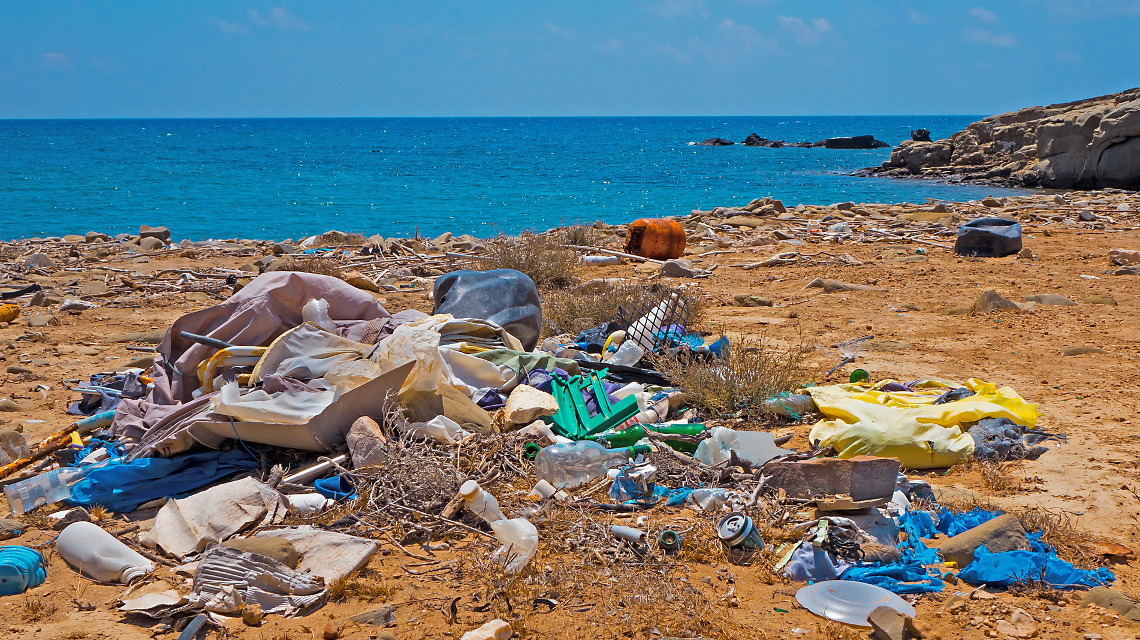"The ecological footprint must incorporate all climate factors"
Nadine MengisProfession:
Climate physicist and biogeochemist
Position:
Head of the Emmy Noether Junior Research Group FOOTPRINTS at the Helmholtz Centre for Ocean Research (GEOMAR) Kiel, Germany

Profession:
Climate physicist and biogeochemist
Position:
Head of the Emmy Noether Junior Research Group FOOTPRINTS at the Helmholtz Centre for Ocean Research (GEOMAR) Kiel, Germany

In the FOOTPRINTS project, a team led by researcher Nadine Mengis is investigating how CO2 emissions must develop in order to stabilize global temperatures and thus achieve the Paris climate goals.
Emissions of the greenhouse gas CO2 are responsible for most of global warming. However, land and oceans currently absorb only about half of these emissions. So-called CO2 removal measures such as renaturation of peatlands, coal phase-out, energy-efficient building refurbishment and climate-friendly mobility are intended to counteract global warming. But are these measures really enough to rebalance carbon sources and sinks? No - says Nadine Mengis. For the junior researcher from Kiel, it is clear that other greenhouse gases such as methane or nitrous oxide influence global temperatures - but are hardly taken into account when calculating the ecological footprint. In the FOOTPRINTS project, the researcher is now taking a close look at all climate-relevant emissions when evaluating CO2 removal measures.
What is the FOOTPRINTS project about?
The FOOTPRINTS project is investigating how the Earth system will respond if we meet our emissions targets. The interplay between the Earth's carbon cycle and heat balance will determine how the temperature trajectory will develop. Their state, in turn, depends on how much CO2 we continue to emit until then and how we achieve our climate targets. Will the climate stabilize even if we use large-scale CO2 removal measures to achieve our goals? What impact will these measures have on the climate beyond CO2 removal?
What is the goal of the project?
At the end of the project, a comprehensive analysis of the various factors influencing temperature stabilization scenarios should help us understand which of these factors dominate on which time scales. An example of relevant socio-economic factors would be the consumed CO2 emission budget, i.e., also how much climate change has progressed, the extent of CO2 removal measures and the mitigation of other climate-relevant impact factors such as greenhouse gases or aerosols. In the Earth system, factors such as the state of the ocean's meridional overturning circulation, natural CO2 uptake capacities on land (regulated by vegetation) as well as at sea will play an important role. These findings will both inform future research priorities for understanding temperature trends below net-zero and provide initial indicators of what our CO2 emissions will need to be in order to stabilize global temperature.
What CO2 removal measures are being analyzed?
Part of the project will be to calculate climate effectiveness FOOTPRINTS of CO2 removal measures. So far, these measures have been studied mainly in terms of their technological and economic effectiveness. However, if we look at the whole process of producing negative CO2 emissions, these methods have further climate-relevant effects, e.g., through the emission of greenhouse gases such as methane and nitrous oxide, but also aerosols, or changes in the land surface. The FOOTPRINTS project will initially investigate CO2 removal measures with high technology readiness, which currently means mainly land-based measures. These include, for example, bioenergy plants combined with CO2 filtration plants and geological storage of CO2, accelerated weathering on land, or direct CO2 removal from the air. Later, we will also investigate marine approaches to CO2 removal, such as electrochemical weathering or macroalgae rearing combined with biomass sink.
The ecological footprint is usually reduced to CO2 emissions. What role do other greenhouse gases such as methane play in the assessment of the ecological footprint?
CO2 removal measures as well as almost all other human activities with an influence on our CO2 emissions always have further climate-relevant effects. For example, land-based transportation emits not only the greenhouse gas CO2, but also warmer soot particles (aerosols) and cooling aerosols such as sulfur dioxide. Agriculture, on the other hand, produces large amounts of methane and nitrous oxide, which warm the climate, and ammonia, which has a cooling climate effect. Especially for the short-term climate impacts of our activities, i.e., on a time scale of about ten years, it is important to include the effects of these factors that affect the climate. However, it is also important to understand that CO2 is by far the longest-lived man-made greenhouse gas and that we must not forget, in the face of all the other factors, that we must get our CO2 emissions to zero.
Germany wants to be CO2-neutral by 2045, according to the Climate Protection Act. Are measures such as renaturation of peatlands, phasing out coal, energy-efficient building refurbishment and climate-friendly mobility not enough?
As part of the Helmholtz Climate Initiative, we have been addressing precisely this question for the past two years - and our answer is: No. Sonja Simon and her team have used an energy system model for Germany to develop a transformation scenario based on a 1.5ºC CO2 emissions budget. This scenario takes into account the coal phase-out, energy-efficient building refurbishment and climate-friendly mobility, as well as measures to further reduce CO2 emissions in industry. Taken all together, the remaining emissions in Germany were around 60 Mt CO2 per year. These need to be offset in order to get to net zero CO2. In addition, experts in agricultural soil science, seagrasses and peatlands have calculated the CO2 removal potential of various methods for Germany. Even in initial calculations, some of which are optimistic, these measures combined could only offset about 25% of these remaining CO2 emissions. This means that we either need to further reduce our remaining emissions through societal behavioral changes or use technological CO2 removal measures combined with geological CO2 storage to achieve CO2 neutrality.
Interview: Beatrix Boldt


